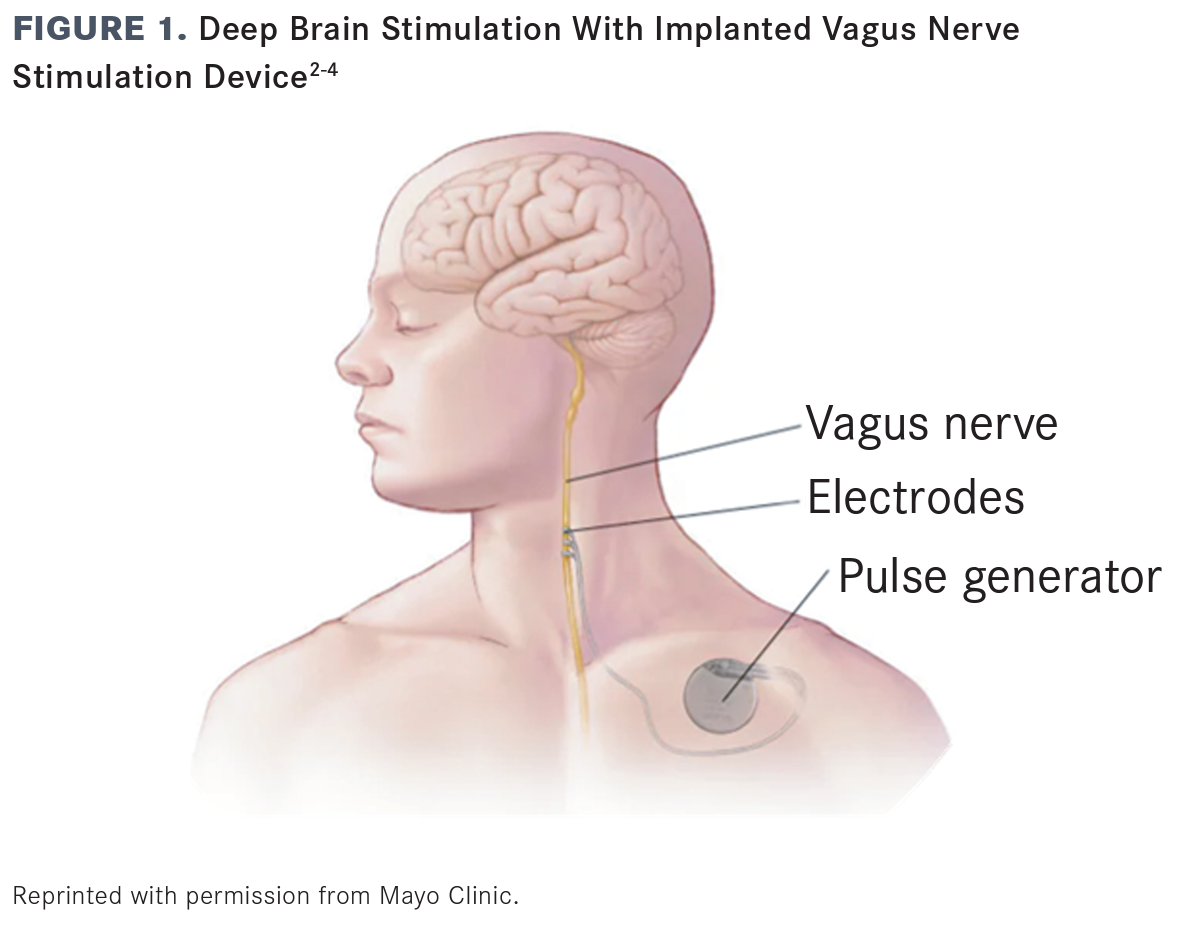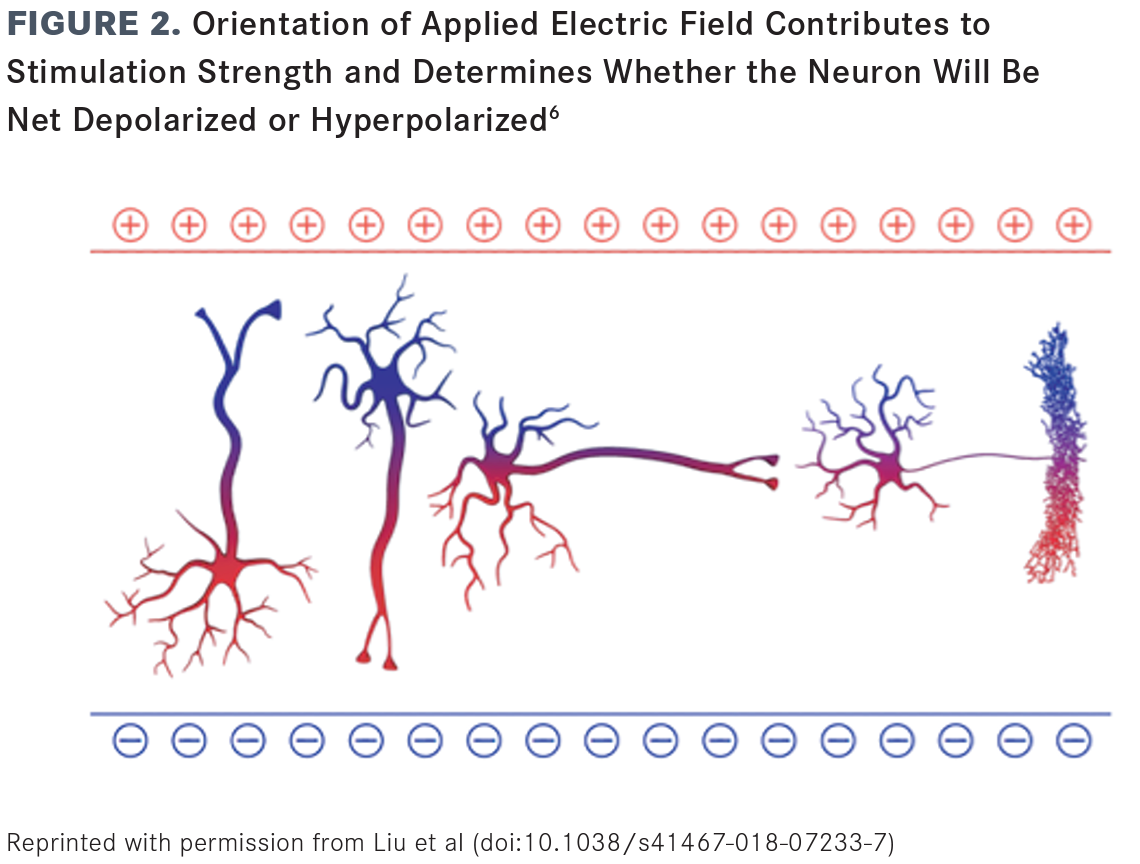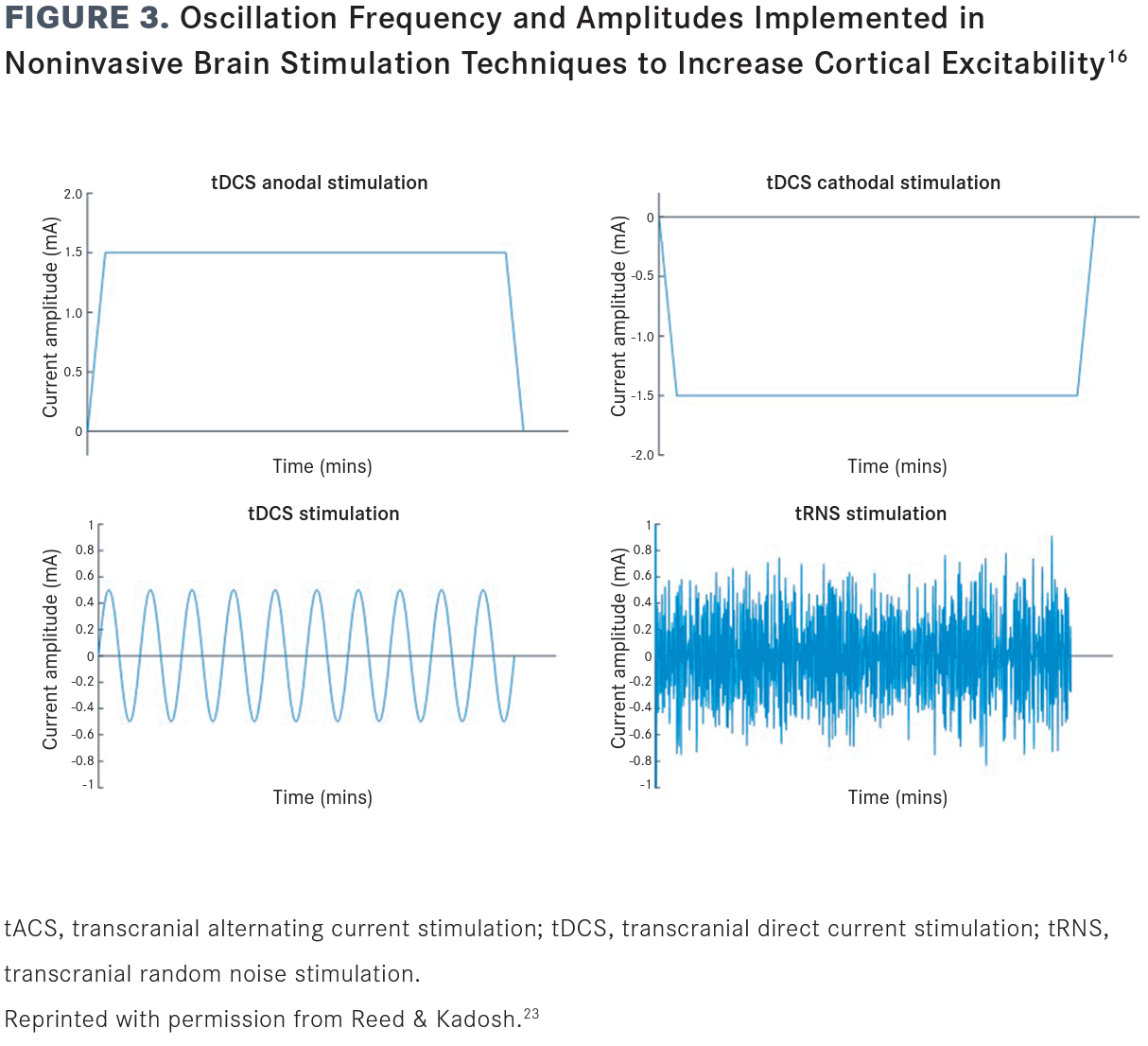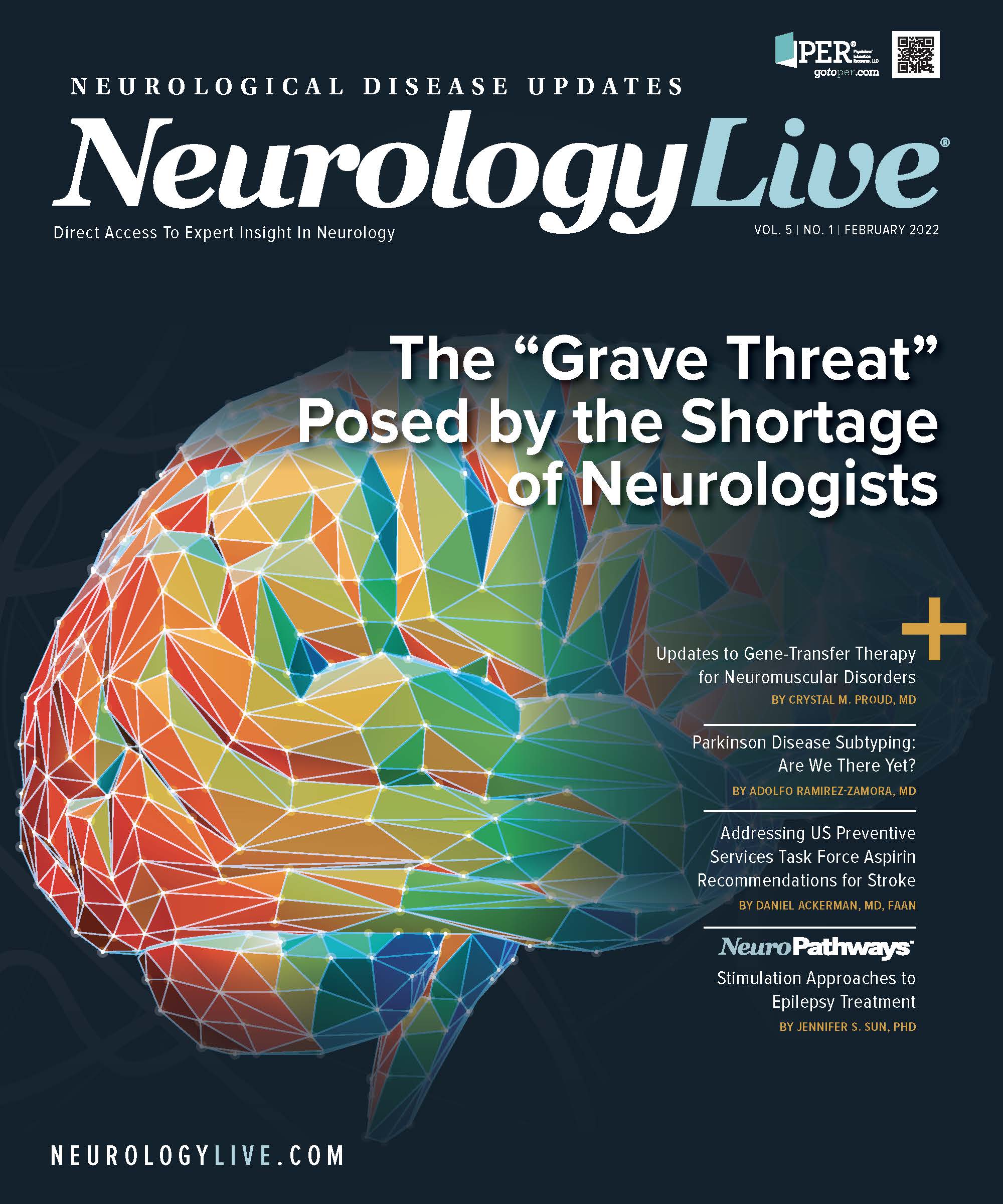Publication
Article
NeurologyLive
Stimulation Approaches to Epilepsy Treatment
Author(s):
With one-third of the 3.4 million US patients with epilepsy currently experience drug-resistant epilepsy, creating an urgent need for novel intervention strategies, such as stimulation approaches.

EPILEPSY IS A COMMON CHRONIC neurological disorder characterized by spontaneous, recurrent, and severe seizures, which greatly diminish quality of life for affected individuals.1,2 Approximately one-third of the 3.4 million US patients with epilepsy currently experience drug-resistant epilepsy.2-4 Thus, novel intervention strategies are urgently needed.3,4
Jennifer S. Sun, PhD

Because epileptogenesis and seizure propagation can be linked to altered cellular ion homeostasis, which reduces the stability of membrane potential, a stimulatory technique can correct for pathologically increased excitability or deficient inhibitory control within the epileptic focus.5 Such deep brain stimulation (DBS) approaches, which have traditionally been applied for neurobehavioral corrections, have increasingly become repurposed for seizure management.1,5
DBS involves the use of an electrical current to activate or inhibit neurons.1 Consequently, cellular membrane polarization is altered, reducing neuronal hyperexcitability and interfering with discharges of epileptogenic networks.5,6 DBS is advantageous because it is reversible, the effects are localized, and the stimulation settings can be dynamically adjusted after device implantation to optimize efficacy and minimize adverse effects (AEs).1 The SANTE study (NCT00101933)7 confirmed both short- and long-term benefits of DBS in reducing seizure frequency, with seizure activity attenuated for up to 5 years.3
Vagus nerve stimulation (VNS) is a form of DBS that was first approved in 1997 for use as an adjunctive therapy in patients with pharmacoresistant epilepsy.8 VNS devices have been successful in reducing seizure frequency, severity, and duration; decreasing antiepileptic drug (AED) use; and improving overall quality of life for patients.8 VNS in the first seconds of a drug-induced seizure successfully aborts the ictal event.2 These devices require minimally invasive surgery to place coiled stimulation leads around the left vagus nerve. The leads are then connected subcutaneously to a generator placed below the clavicle (FIGURE 1).2-4 The orientation of the field is important; rotating the orientation of the applied electric field relative to the soma-dendritic axis of the main neuron changes the strength and direction of the effects (FIGURE 2).6 VNS devices are beneficial because they can be interrogated and programmed externally after initial implantation and system validation.2 Moreover, VNS devices are well tolerated, with no demonstrable AEs on vagus-mediated visceral functions.2,9,10 Several VNS devices have received FDA approval, including the Neurocybernetic Prosthesis System (Cyberonics, Inc) in 2001,11 the NeuroPace Responsive Neurostimulation System (NeuroPace, Inc) in 2013,12 and Medtronic DBS Therapy for Epilepsy (Medtronic, Inc) in 2018.13 Cyberonics’ VNS therapy system is the most widely used neurostimulator for patients older than 12 years who have intractable partial epilepsy.9,14 NeuroPace’s device is approved for patients older than 18 years who have refractory epilepsy with no more than 2 epileptogenic foci.12 Medtronic’s device is approved as an adjunctive therapy for patients older than 18 years with refractory, partial-onset epileptic seizures.3,13

Clinical trials have demonstrated the safety of VNS and its success in suppressing seizures in humans.2,14 In a 1998 trial, 254 patients were recruited for an evaluation of the Cyberonics’ VNS device in managing epilepsy.2 Inclusion criteria included being aged 12 to 65 years; having had at least 6 medically refractory partial-onset seizures involving alteration of consciousness over 30 days, with no more than 21 days between seizures; and having a stable regimen of 1 to 3 FDA-approved AEDs for at least 1 month before study entry.2
Patients received either high (a 30-second series of pulses, with each pulse lasting 500 µs, delivered at a frequency of 30 Hz every 5 minutes) or low stimulation (a 30-second series of 130-µs, 1-Hz pulses every 3 hours).2 Patients in the high-stimulation group received progressive increases in the current as tolerated (up to 3.5 mA) and were given a handheld magnet with which they could manually activate the device to produce a stimulatory signal when needed to abort a seizure.2 Patients receiving high stimulation experienced a mean 27.9% decrease in total seizure frequency (P = .02) and a reduction in partial-onset seizures (P = .02).2 Patients receiving low stimulation also experienced a reduction of total seizures (average of 15.2% decrease, P < .0001) and a reduction in partial-onset seizures (P < .0001), although to a lesser extent than the high-stimulation group.2 Patients in the low-stimulation group experienced improvements to well-being, although the high-stimulation group experienced significantly greater improvement in perceived well-being compared with the low-stimulation group.2 AEs included vocal cord paralysis, facial muscle paresis, fluid accumulation over the generator, and infection around the device, all of which resolved after treatment or device removal. No changes in serum chemistry, hematology, urinalysis, weight, or vital signs were observed.2

Long-term benefits of VNS therapy with Cyberonics’ device were examined in a retrospective review of patient data conducted at New York University Langone Comprehensive Epilepsy Center and Cooperman Barnabas Medical Center.14 Seizure control improved significantly over time (mean seizure reduction of 35.7%, 52.1%, 58.3%, 60.4%, 65.7%, 75.5%, and 75.5% at 6 months and years 1, 2, 4, 6, 8, and 10, respectively; P < .01 for all comparisons) in the 65 enrolled patients, with a plateau after 24 months of therapy.14 The median number of weekly seizures decreased significantly from baseline (4) to last follow-up (0.5), for an overall mean seizure reduction of 76.3% (P < .001).14 However, an observed increase in AED burden over time may have contributed to the benefit observed in the study.14
Use of VNS as an adjunct to best medical practice (BMP) was studied in the PuLsE trial (NCT00522418),15 an international, multicenter, prospective, randomized, parallel-group, open-label, long-term effectiveness study.8 Improvements in quality of life were recorded with the widely accepted Quality of Life in Epilepsy 89 (QOLIE-89) item inventory scoring system.8
PuLsE was prematurely terminated in July 2008 because of low enrollment, which was attributed to patient resistance to study randomization.8 Strong preexisting opinions (either positive or negative) about VNS therapy were common, leading many patients to reject study participation because it required random assignment to either BMP plus VNS or the BMP-only control group.8 Therefore, the planned study duration was reduced from 2 years to 1 year, and the original enrollment estimate of 362 patients was modified; 96 patients (48 in each group) with a baseline QOLIE-89 score and at least 1 postbaseline assessment were evaluated for efficacy (including only 7 patients who completed 2 years of follow-up).8 Compared with the BMP-only group, patients assigned to VNS plus BMP saw significantly greater improvements in the QOLIE-89 total score (P < .05) and seizure frequency (P = .03). The difference between the groups increased gradually over time, reaching a maximum at the end of the 12-month follow-up, but differences at the 3-, 6-, and 9-month time points were not statistically significant.8
The precise mechanism of action of VNS remains unknown.2,16-18 In humans, VNS alters blood flow within certain brain regions.2 Some authors have suggested that brainstem nuclei play a role in the vagal antiepileptic mechanism.2 Preoperative predictors of long-term therapeutic response to VNS remain elusive.14 Changes in AED regimens are common and may also impact seizure frequency, potentially confounding efforts to determine how much clinical improvement can be attributed to VNS alone.14 Over time, these AED adjustments may interact synergistically with the effects of VNS to maximize seizure control.14 Additional research is needed to differentiate between the contributions of factors such as AED changes to the longterm outcomes of patients receiving VNS therapy.
Overall, VNS is an effective and safe nonpharmacologic adjunctive treatment for patients with refractory partial-onset seizures.2,19,20 VNS is not a cure for epilepsy but is designed to lessen the number and severity of seizures.4,21 Patients undergoing long-term VNS treatment should be aware of the need for periodic device revisions, most of which involve generator changes due to power depletion after several years of use.14 A less common reason for revision is lead fracture.14 Removal of the device is uncommon and often temporary.14 The efficacy of VNS is also limited; it is comparable to introduction of a new AED.5 Automation, more effective information processing, and device miniaturization are anticipated improvements.1
Suppression of epileptiform activity propagation is also achievable by delivering electrical currents noninvasively using temporal electrodes.5,6,22,23 The placement of the active electrode (anode) is based on the cortical area to be modulated, whereas the return electrode (cathode) is placed on an unrelated or extracephalic region.23 Such transcranial electrical stimulation (tES) strategies include the following (FIGURE 3)16: transcranial direct current stimulation (tDCS), which uses an anode and cathode to alter excitability and connectivity in the brain5,6,23; transcranial alternating current stimulation, which uses short durations of stimulation to entrain neural oscilla-tions6,23; and transcranial random noise stimulation, which uses an alternating current to stimulate at random frequency and amplitude within a specific range.23 The mechanism of action of tDCS remains unknown, but studies have determined that functional N-methyl-D-aspartate receptors and sodium and calcium channels are required for tDCS, suggesting that alteration of synaptic function underlies the effects of tES.5,6

tES is beneficial because of its targeted effects on cortical excit-ability.5,6,22 No severe AEs have been observed with tDCS.23 In a rodent model of epilepsy, tES was shown to not disrupt sleep or affect waking behaviors.22 Mild AEs included headache, itching at the site of elec-trode placement, and fatigue.6,23
xtES benefits are dependent on the signal amplitude and neural mechanisms, such as stochastic resonance, rhythm resonance, temporal biasing of neuronal spikes, entrainment of network patterns, and imposed patterns.6 Age, sex, composition of the tissue under the anode, electrode placement, current intensity, current phase, and current frequency may also affect elicited behavioral effects.23 In rodent models, appropriate timing of tES with brain patterns and activity was determined to be critical for effectively reducing spike-and-wave episodes.22 Thus, deep-electrode recordings would be required for accurate detection of abnormal patterns prior to tES induction.22 Moreover, certain drugs, such as the selective serotonin reuptake inhibitor, citalopram (Celexa; Allergan), can interfere with induced inhibition and abolish the effects of tES.5,24
Although numerous animal and human studies have demonstrated successful suppression of epileptiform activity without neurolog-ical injury,5,24 another major barrier to tES is loss of much of the applied current due to shunting across the scalp caused by the higher resistance of the skull compared with the scalp.6 Compared with rodents, the larger heads and thicker skulls of primates necessitate a stronger applied current to offset the greater loss to shunting. Thus, investigators translating animal model–based protocols to humans should modify the stimulation parameters as necessary to produce comparable intracerebral fields.6
Future studies of tES should include large-scale investigations of optimized electrode placement, ideal stimulation protocols, long-term effects, and strategies for minimizing peripheral and indirect effects.5,6,23,25 Simultaneous stimulation and brain activity recording will also provide quantitation of tES-induced effects.6 Also important to investigate are the effects of sensory contributions, such as anesthesia or mood-altering drugs.5,6
For correspondence: jsun@nygenome.org
New York Genome Center, New York, NY
REFERENCES
1. Wu YC, Liao YS, Yeh WH, Liang SF, Shaw FZ. Directions of deep brain stimulation for epilepsy and Parkinson’s disease. Front Neurosci. 2021;15:671. doi:10.3389/fnins.2021.680938
2. Handforth A, DeGiorgio CM, Schachter SC, et al. Vagus nerve stimulation therapy for partial-onset seizures: a randomized active-control trial. Neurology. 1998;51(1):48-55. doi:10.1212/wnl.51.1.48
3. From hope to practice: deep brain stimulation for epilepsy now available. Vanderbilt University Medical Center Discover. February 6, 2019. Accessed January 5, 2022. https://discover.vumc.org/2019/02/from-hope-to-practice-deep-brain-stimulation-for-epilepsy-now-available/
4. Vagus nerve stimulation. Mayo Clinic. November 17, 2020.Accessed January 5, 2022. https://www.mayoclinic.org/tests-procedures/vagus-nerve-stimulation/about/pac-20384565
5. San-Juan D, Morales-Quezada L, Orozco Garduño AJ, et al. Transcranial direct current stimulation in epilepsy. Brain Stimulat. 2015;8(3):455-464. doi:10.1016/j.brs.2015.01.001
6. Liu A, Vöröslakos M, Kronberg G, et al. Immediate neurophysiological effects of transcranial electrical stimulation. Nat Commun. 2018;9(1):5092. doi:10.1038/s41467-018-07233-7
7. SANTE - stimulation of the anterior nucleus of the thalamus for epilepsy. ClinicalTrials.gov. Updated March 22, 2018. Accessed January 5, 2022. https://clinicaltrials.gov/ct2/show/NCT00101933
8. Ryvlin P, Gilliam FG, Nguyen DK, et al. The long-term effect of vagus nerve stimulation on quality of life in patients with pharmacoresistant focal epilepsy: the PuLsE (open prospective randomized long-term effectiveness) trial. Epilepsia. 2014;55(6):893-900. doi:10.1111/epi.12611
9. Schachter SC. Therapeutic effects of vagus nerve stimulation in epilepsy and implications for sudden unexpected death in epilepsy. Clin Auton Res. 2006;16(1):29-32. doi:10.1007/s10286-006-0275-1
10. Nichols JB, McCallum AP, Khattar NK, et al. Pseudoanginal chest pain associated with vagal nerve stimulation: a case report. BMC Neurol. 2020;20(1):144. doi:10.1186/s12883-020-01693-5
11. Premarket approval (PMA):Neurocybernetic Prosthesis System. FDA.Updated January 3, 2022. Accessed January 5, 2022. https://www.accessdata.fda.gov/scripts/cdrh/cfdocs/cfpma/pma.cfm?ID=P970003S031
12. Premarket approval (PMA):NeuroPace RNS System. FDA. Updated January 3, 2022. Accessed January 5, 2022. https://www.accessdata.fda.gov/scripts/cdrh/cfdocs/cfpma/pma.cfm?id=P100026
13. Premarket approval (PMA):Medtronic DBS Therapy for Epilepsy. FDA. Updated January 3, 2022. Accessed January 5, 2022.https://www.accessdata.fda.gov/scripts/cdrh/cfdocs/cfpma/pma.cfm?id=P960009S219
14. Elliott RE, Morsi A, Tanweer O, et al. Efficacy of vagus nerve stimulation over time: review of 65 consecutive patients with treatment-resistant epilepsy treated with VNS > 10 years. Epilepsy Behav. 2011;20(3):478-483. doi:10.1016/j.yebeh.2010.12.042
15. Study comparing best medical practice with or without adjunctive VNS therapy in pharmacoresistant partial epilepsy patients.ClinicalTrials.gov. Updated January 26, 2015. Accessed January 5, 2022. https://clinicaltrials.gov/ct2/show/NCT00522418
16. Groves DA, Brown VJ. Vagal nerve stimulation: a review of its applications and potential mechanisms that mediate its clinical effects. Neurosci Biobehav Rev. 2005;29(3):493-500. doi:10.1016/j.neubiorev.2005.01.004
17. Vagus nerve stimulation. Aetna.Updated April 15, 2021. Accessed January 5, 2022. http://www.aetna.com/cpb/medical/data/100_199/0191.html
18. Ben-Menachem E. Neurostimulation-past, present, and beyond. Epilepsy Curr. 2012;12(5):188-191. doi:10.5698/1535-7511-12.5.188
19. Fisher B, DesMarteau JA, Koontz EH, Wilks SJ, Melamed SE. Responsive vagus nerve stimulation for drug resistant epilepsy: a review of new features and practical guidance for advanced practice providers. Front Neurol. 2021;11:610379. doi:10.3389/fneur.2020.610379
20. Vagal nerve stimulation for epilepsy and depression. Washington State Health Care Authority. Accessed January 5, 2022. https://www.hca.wa.gov/about-hca/health-technology-assessment/vagal-nerve-stimulus-epilepsy-and-depression
21. Vagus nerve stimulation (VNS). Epilepsy Foundation. Updated March 12, 2018. Accessed January 5, 2022. https://www.epilepsy.com/learn/treating-seizures-and-epilepsy/devices/vagus-nerve-stimulation-vns
22. Berényi A, Belluscio M, Mao D, Buzsáki G. Closed-loop control of epilepsy by transcranial electrical stimulation. Science. 2012;337(6095):735-737. doi:10.1126/science.1223154
23. Reed T, Cohen Kadosh R. Transcranial electrical stimulation (tES) mechanisms and its effects on cortical excitability and connectivity. J Inherit Metab Dis. 2018;41(6):1123-1130. doi:10.1007/s10545-018-0181-4
24. Regner GG, Pereira P, Leffa DT, et al. Preclinical to clinical translation of studies of transcranial direct-current stimulation in the treatment of epilepsy: a systematic review. Front Neurosci. 2018;12:189. doi:10.3389/fnins.2018.00189
25. Wu L, Liu T, Wang J. Improving the effect of transcranial alternating current stimulation (tACS): a systematic review. Front Hum Neurosci. 2021;15:652393. doi:10.3389/fnhum.2021.652393





